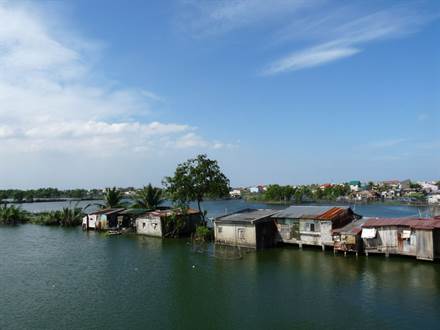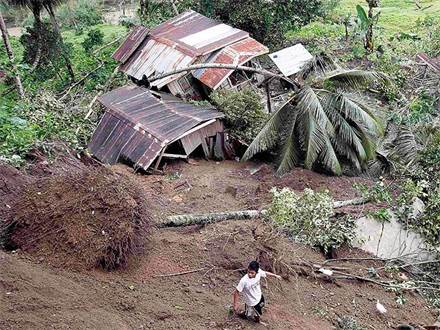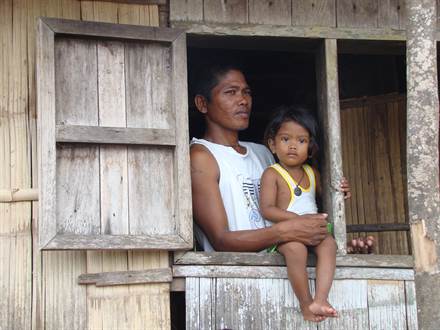
Silted up swamps in the Philippines
-
Rivers and lakes
Deforestation on the uplands of Philippine islands has been causing soil loss, landslides and flooding downstream for decades. On Mindanao, the country’s second largest island, Wetlands International and its partners are attempting to help communities in harm’s way to revitalise their ecosystems and their safety. The focus of attention is the River Agusan, the Philippines’ third longest river, which drains the island’s northeast highlands.

As the river flows out of the highlands, it slows its flow and spreads out to form the Agusan freshwater swamp. This peat wetland, with a wildlife reserve at its core, covers around 200 square kilometres. It is rich in bird life and famous for the world’s largest crocodile, which lives here, albeit it now in small numbers (less than 50). It is recognised under the Ramsar Convention as a wetland of international importance.
The swamp has long acted as a flood retention reservoir, protecting downstream communities by absorbing high river flows during heavy rains. But deforestation and soil erosion from mining and logging operations upstream is gradually filling the swamp with silt. So its capacity to moderate floods is declining. Tens of thousands of people in the river valley now suffer regularly from floods that can last for up to three months and result in flood waters up to three metres deep coursing through streets and homes. During storms in January 2014, more than 30,000 people were evacuated from 44 villages downstream of the swamp.

For years, humanitarian organisations have tried to assist victims of flooding and landslide tragedies in the Philippines. But relief aid, preparations for evacuation and ad hoc solutions like building houses on stilts have all failed to stem the destruction because the root cause, deforestation, has not been addressed. While loggers, farmers and miners remain at work in the headwaters of the river, the floods seem likely to keep coming. Only ecosystem-based solutions hold out hope for a long-term solution.

Wetlands International is attempting to build the case for action to stem the ecological destruction upstream, in order to revive the swamp and protect those living downstream. It will take time, but they are working with local communities and administrators to bring ecological thinking into planning, including reforestation and terracing on hillsides to reduce erosion. The governor of Agusan del Sur province has organised workshops with local government authorities to encourage them to work on protecting river banks from erosion and reforesting uplands.
Wetlands International works to increase community resilience in collaboration with the Netherlands Red Cross and CARE the Netherlands in the project ‘Proud of my Purok’.
